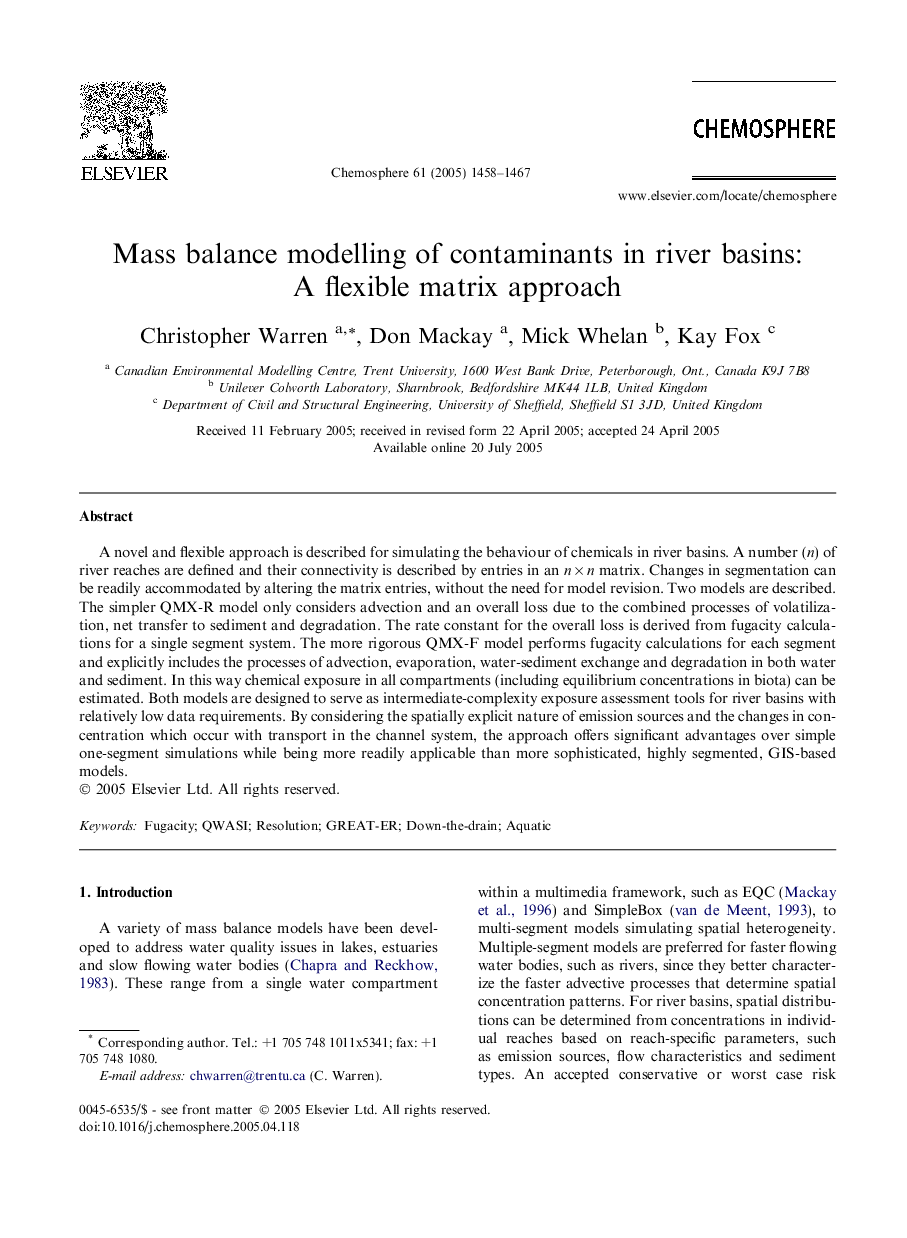| Article ID | Journal | Published Year | Pages | File Type |
|---|---|---|---|---|
| 9451360 | Chemosphere | 2005 | 10 Pages |
Abstract
A novel and flexible approach is described for simulating the behaviour of chemicals in river basins. A number (n) of river reaches are defined and their connectivity is described by entries in an n Ã n matrix. Changes in segmentation can be readily accommodated by altering the matrix entries, without the need for model revision. Two models are described. The simpler QMX-R model only considers advection and an overall loss due to the combined processes of volatilization, net transfer to sediment and degradation. The rate constant for the overall loss is derived from fugacity calculations for a single segment system. The more rigorous QMX-F model performs fugacity calculations for each segment and explicitly includes the processes of advection, evaporation, water-sediment exchange and degradation in both water and sediment. In this way chemical exposure in all compartments (including equilibrium concentrations in biota) can be estimated. Both models are designed to serve as intermediate-complexity exposure assessment tools for river basins with relatively low data requirements. By considering the spatially explicit nature of emission sources and the changes in concentration which occur with transport in the channel system, the approach offers significant advantages over simple one-segment simulations while being more readily applicable than more sophisticated, highly segmented, GIS-based models.
Keywords
Related Topics
Life Sciences
Environmental Science
Environmental Chemistry
Authors
Christopher Warren, Don Mackay, Mick Whelan, Kay Fox,
